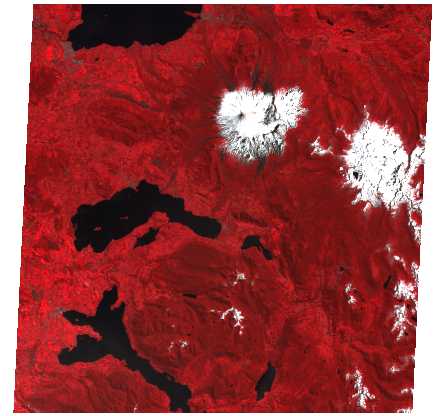ASTER L2 Surface Reflectance SWIR and ASTER L2 Surface Reflectance VNIR V003
Access & Use Information
Downloads & Resources
-
Google Scholar search resultsHTML
Search results for publications that cite this dataset by its DOI.
-
The dataset's project home pageHTML
The LP DAAC website provides detailed information on discovery, distribution,...
-
The dataset's project home pageHTML
The ASTER home page is maintained through NASA's Jet Propulsion Laboratory...
-
This dataset's landing pageHTML
The LP DAAC product page provides information on Science Data Set layers and...
-
Download this dataset through Earthdata Searchapplication/x-hdf
Earthdata Search allows users to search, discover, visualize, refine, and...
-
View this dataset's algorithm theoretical...PDF
The ATBD provides physical theory and mathematical procedures for the...
-
View this dataset's user's guidePDF
ASTER Level-1 User Guide
-
View this dataset's user's guidePDF
ASTER Higher-Level Product User Guide
-
View documentation related to this datasetPDF
The ASTER Level-1T Product Specification provides a description of the data...
-
View this dataset's how-to documentationPDF
ASTER Order Instructions
-
Get a related visualizationJPEG
Browse image for Earthdata Search
-
View this dataset's user's guidePDF
The ASTER User Handbook provides in depth information on ASTER data products.
-
Landing PageLanding Page
Dates
| Metadata Created Date | November 12, 2020 |
|---|---|
| Metadata Updated Date | April 8, 2024 |
Metadata Source
- Data.json Data.json Metadata
Harvested from NASA Data.json
Graphic Preview

Additional Metadata
| Resource Type | Dataset |
|---|---|
| Metadata Created Date | November 12, 2020 |
| Metadata Updated Date | April 8, 2024 |
| Publisher | LP DAAC |
| Maintainer | |
| Identifier | C1299783800-LPDAAC_ECS |
| Data First Published | 2000-03-06 |
| Language | en-US |
| Data Last Modified | 2024-03-29 |
| Category | Terra, geospatial |
| Public Access Level | public |
| Bureau Code | 026:00 |
| Metadata Context | https://project-open-data.cio.gov/v1.1/schema/catalog.jsonld |
| Metadata Catalog ID | https://data.nasa.gov/data.json |
| Schema Version | https://project-open-data.cio.gov/v1.1/schema |
| Catalog Describedby | https://project-open-data.cio.gov/v1.1/schema/catalog.json |
| Citation | NASA/METI/AIST/Japan Spacesystems and U.S./Japan ASTER Science Team. AST_07.003. ASTER Level 2 Surface Reflectance Product. Sioux Falls, South Dakota, USA. Archived by National Aeronautics and Space Administration, U.S. Government, NASA EOSDIS Land Processes Distributed Active Archive Center. https://doi.org/10.5067/ASTER/AST_07.003. https://doi.org/10.5067/ASTER/AST_07.003. The DOI landing page provides citations in APA and Chicago styles.. |
| Creator | NASA/METI/AIST/Japan Spacesystems and U.S./Japan ASTER Science Team |
| Graphic Preview Description | Browse image for Earthdata Search |
| Graphic Preview File | https://e4ftl01.cr.usgs.gov/WORKING/BRWS/Browse.001/2020.11.18/pg-BR1A0000-2020111801_011_033.1.VNIR.jpg |
| Harvest Object Id | e0c4dad8-3496-474d-a9f2-931a7918790a |
| Harvest Source Id | 58f92550-7a01-4f00-b1b2-8dc953bd598f |
| Harvest Source Title | NASA Data.json |
| Homepage URL | https://doi.org/10.5067/ASTER/AST_07.003 |
| Metadata Type | geospatial |
| Old Spatial | -180.0 -83.0 180.0 83.0 |
| Program Code | 026:001 |
| Release Place | Sioux Falls, South Dakota, USA |
| Series Name | AST_07.003 |
| Source Datajson Identifier | True |
| Source Hash | 6447add76fc4c992ca36a5ae1209028a0cf3960bcd64ee73c27e0ed617d864a2 |
| Source Schema Version | 1.1 |
| Spatial | |
| Temporal | 2000-03-06T00:30:05Z/2024-04-08T00:00:00Z |
Didn't find what you're looking for? Suggest a dataset here.

